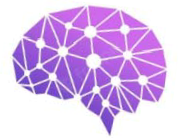
qEEG screening
Service code s9013
Short description
Anxiety is one of the most common mental characteristics of humans. It is the set of information-gathering reactions that evolved to allow individuals to face uncertainty/danger and survive. Even though anxiety helps us to avoid frightening situations and achieve our goals, it also causes significant suffering and in its extreme forms can become completely debilitating.
Biologically there are two subcomponents of anxiety: somatic and cognitive. Somatic anxiety (or anxious arousal) is a physiological component of anxiety, characterized by autonomic arousal (e.g. high blood pressure, sweating, changes in respiratory rate and intensity). Cognitive anxiety (or anxious apprehension) refers to the mental component of anxiety and consist of expectations about success or self-evaluation, worrying, negative self-talk, and disrupted attentional processes.
Results
By performing this qEEG screening you will get the information on:
- whether you have a qEEG pattern typical for people who suffer from anxiety and,
- your propensity for anxious arousal or anxious apprehension.
Notes:
- The results of qEEG analysis are put in context of published scientific studies, the individual’s health history, complaints, symptoms and psychometric and other evaluations (if available).
- Present psychotropic medication use may affect the results.
To place a service order, use the following email:
References
- Etkin A, Wager TD. Functional neuroimaging of anxiety: a meta-analysis of emotional processing in PTSD, social anxiety disorder, and specific phobia. Am J Psychiatry 2007; 164: 1476–88.
- Herrmann WM, Winterer G. Electroencephalography in psychiatry – current status and outlook. Nervenarzt 1996; 67: 348-359.
- Martens R, Burton D, Vealey R, Bump L, Smith D. The development of the competitive state anxiety inventory-2 (CSAI-2). In R. Martens, R. S. Vealey, & D. Burton (Eds.), Competitive anxiety in sport (pp. 117–190). Champaign, IL: Human Kinetics, 1990.
- Karakas S. A descriptive framework for information processing: an integrative approach. Int J Psychophysiol 1997: 26(1–3): 353–368.
- Knyazev GG, Slobodskaya HR, Safronova MV, Sorokin OV, Goodman R, Wilson GD. Personality, psychopathology and brain oscillations. Personal Individ Differ 2003; 35: 1331–1349.
- Knyazev GG, Slobodskaya HR, Wilson GD. Psychophysiological correlates of behavioural inhibition and activation. Personal. Individ Differ 2002; 33: 647–660.
- Shin LM, Liberzon I. The neurocircuitry of fear, stress and anxiety disorders. Neuropsychopharmacology 2010; 35: 169–91.